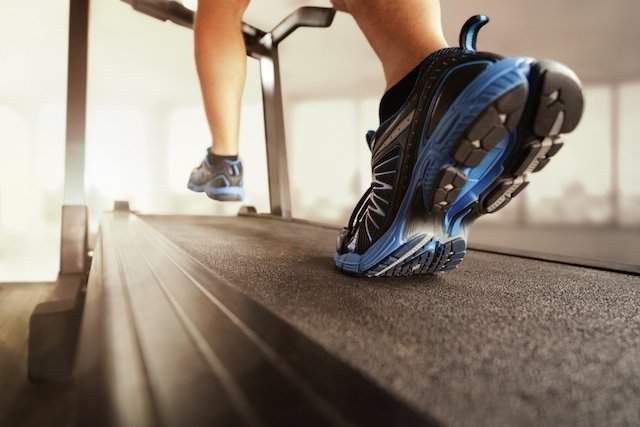The Cooper test is a test that aims to assess cardiorespiratory capacity by analyzing the distance covered during 12 minutes, in a run or walk, and is used to assess a person’s physical fitness.
This test also makes it possible to indirectly determine the maximum oxygen volume (VO2 max), which corresponds to the maximum capacity for uptake, transport and use of oxygen during physical exercise, being a good indicator of the person’s cardiovascular capacity.

How the test is done
To do the Cooper test, the person must run or walk, without interruption, for 12 minutes, on a treadmill or on a running track, maintaining an ideal walking or running pace. After this period, the distance covered must be recorded.
The distance covered is then applied to a formula that is used to calculate the maximum VO2, and the person’s aerobic capacity is then checked. Therefore, to calculate the maximum VO2 taking into account the distance covered in meters by the person in 12 minutes, the distance (D) must be entered into the following formula: VO2 max = (D – 504)/ 45.
According to the VO2 obtained, it is then possible for the physical education professional or doctor monitoring the person to assess their aerobic capacity and cardiovascular health.
How to determine VO2 max?
Maximum VO2 corresponds to the maximum capacity that a person has to consume oxygen during physical exercise, which can be determined indirectly, through performance tests, such as the Cooper test.
This is a parameter widely used to assess a person’s maximum cardiorespiratory function, being a good indicator of cardiovascular capacity, as it is directly related to cardiac output, hemoglobin concentration, enzymatic activity, heart rate, muscle mass and arterial oxygen concentration. . Learn more about VO2 max.
How to understand the result
The result of the Cooper test must be interpreted by the doctor or physical education professional taking into account the VO2 result and factors such as body composition, amount of hemoglobin, whose function is to transport oxygen, and maximum systolic volume, which may vary from person to person. for woman.
The following tables allow you to identify the quality of a person’s aerobic capacity depending on the distance covered (in meters) in 12 minutes:
1. Aerobic Capacity in Men
Aerobic capacity in men according to age is shown in the following table:
2. Aerobic Capacity in Women
Aerobic capacity in women according to age is shown in the following table:
Bibliography
- LIMA, Frederico L. Proposal for a qualitative study on the traditional and modified Cooper test on the treadmill. Course Completion Work, 2010. Faculty of Physical Education of the State University of Campinas.
- SILVA, Michel S. Relationship between performance in the 12-minute Cooper test and the anaerobic threshold in adults. R. of Physical Education/UEM Maringá. Vol. 20. 1. ed; 61-67, 2009

Sign up for our newsletter and stay up to date with exclusive news
that can transform your routine!
Warning: Undefined array key "title" in /home/storelat/public_html/wp-content/plugins/link-whisper-premium/templates/frontend/related-posts.php on line 12
Warning: Undefined array key "title_tag" in /home/storelat/public_html/wp-content/plugins/link-whisper-premium/templates/frontend/related-posts.php on line 13





